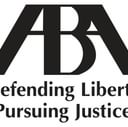PHILADELPHIA BAR ASSOCIATION RESOLUTION CALLING FOR A MORATORIUM ON CAPITAL PUNISHMENT UNTIL SUCH TIME THAT FAIRNESS IN ITS ADMINISTRATION CAN BE ENSURED
Adopted by the Board of Governors November 25, 1997, voting 18 to 10.
WHEREAS, the American Bar Association, on February 3, 1997, adopted a resolution calling for a moratorium on executions until such time that policies and procedures are implemented to “(1) ensure that death penalty procedures are administered fairly and impartially, in accordance with due process, and (2) minimize the risk that innocent persons may be executed;” n1
WHEREAS, the Pennsylvania Bar Association, on October 31, 1997, adopted a resolution calling for a moratorium on capital punishment “until such time as the fair and impartial administration of the death penalty can be ensured;” n2
WHEREAS, Pennsylvania has the fourth largest death row in the country with 215 people, 115 of whom are from Philadelphia.
WHEREAS, the recommendations made in the July, 1990 Report of the Joint Task Force on Death Penalty Litigation in Pennsylvania, calling for the creation and funding of a capital case resource center, the adoption of statewide standards for the competency of capital counsel, and adequate funding for capital counsel, have not been fully implemented; n3
WHEREAS, it appears most defendants in capital cases are without the resources necessary to mount an adequate defense at trial and to challenge their convictions in post-conviction litigation.
WHEREAS, the recommendations of the Philadelphia Bar Association in 1993 calling for the establishment of a commission to investigate ethnic and racial discrimination in Philadelphia criminal justice system have not been implemented, notwithstanding an announcement by the Pennsylvania Supreme Court that it would initiate a statewide study on racial, ethnic, and gender fairness upon the receipt of state funding; n4
WHEREAS, there exists a substantial risk, in Philadelphia and elsewhere, that the death penalty continues to be imposed in an arbitrary, capricious and discriminatory manner; n5
WHEREAS, there has been a substantial change in due process protections in capital cases, including an increase in the number of aggravating factors such that the statute now fails to genuinely narrow the class of offenders eligible for imposition of the death penalty, n6 limitations on state and federal habeas corpus review, n7 an amendment permitting victim impact evidence that does not provide guidance for its use, n8 and a repeal of the requirement that the Supreme Court conduct proportionality review; n9
NOW, THEREFORE, BE IT RESOLVED that the Philadelphia Bar Association hereby joins the American Bar Association and the Pennsylvania Bar Association and calls for a moratorium on executions in Pennsylvania until such time as the fair and impartial administration of the death penalty can be ensured and the risk that innocent persons may be executed is minimized.
Endnotes
1. Recommendations and Resolutions Concerning the Death Penalty and Calling for a Moratorium on Executions, as approved by the American Bar Association House of Delegates, February 3, 1997. See also Report Regarding Implementation of the American Bar Association Recommendations and Resolutions Concerning the Death Penalty and Calling for a Moratorium on Executions, Coyne and Entzeroth, Georgetown Journal on Fighting Poverty, Fall 1996, 3.
2. Resolution Requesting a Moratorium on Capital Punishment in Pennsylvania, adopted by the PBA House of Delegates, October 31, 1997.
3. TASK FORCE REPORT, Joint Task Force on Death Penalty Litigation in Pennsylvania (July, 1990).
4. Petition of the Philadelphia Bar Association Seeking the Appointment of a Commission to Investigate the Presence and Effect of Racial and Ethnic Bias in the Philadelphia Justice System (filed November 23, 1993). The committee reviewed reports from comparable commissions in other states and concluded that their findings merited the establishment of a commission to investigate racial and ethnic bias in our jurisdiction. Id. at 4.
5. That such discrimination is widespread is well documented. See U.S. General Accounting Office, Death Penalty Sentencing: Research Indicates Pattern of Racial Disparities, 5 (1990). The GAO report reviewed twenty-eight empirical studies and concluded they documented a pattern “indicating racial disparities in the charging, sentencing, and imposition of the death penalty.” Id. at 1. See also Baldus, David, George Woodworth, and Charles Pulaski, Equal Justice and the Death Penalty: A Legal and Empirical Analysis (1990); Bowers, The Pervasiveness of Arbitrariness and Discrimination Under Post-Furman Capital Statutes, 74 Journal of Criminal Law & Criminology, 1067 – 1100 (1983); Ekland-Olson, Structured Discretion, Racial Bias and the Death Penalty: The First Decade after Furman in Texas, 69 Social Science Q 853 – 873 (1988); Foley, Florida after the Furman Decision: The Effect of Extralegal Factors on the Processing of Capital Offense Cases, 5 Behavioral Sciences & the Law, 457 – 465 (1987); Gross, Samuel and Robert Mauro, Death and Discrimination (1989); Gross and Mauro, Patterns of Death: An analysis of Racial Disparities in Capital Sentencing and Homicide Victimization, 37 Stanford Law Review 27 (1984); Jacoby and Paternoster, Sentence Disparity and Jury Picking, 73 Journal of Criminal Law and Criminology 379 (1982); Keil, Vito, Race, Homicide Severity, and Application of the Death Penalty: A Consideration of the Barnett Scale, 27 Criminology, 511 – 535 (1989); Nakell, Barry and Kenneth Hardy, The Arbitrariness of the Death Penalty (1987); Paternoster, and Kazyaka, The Administration of the Death Penalty in South Carolina: Experiences Over the First Few Years, 39 South Carolina Law Review, 245 – 414 (1988); Paternoster, Prosecutorial Discretion in Requesting the Death Penalty: A Case of Victim-Based Racial Discrimination, 18 Law & Society Review 437 (1984); Pasternoster, Race of Victim and Location of Crime: The Decision to Seek the Death Penalty in South Carolina, 74 J.Crim.L. and Criminology 754 Penalty, 46 American Society Review 918 (1981); Radelet, Michael and Glenn Pierce, Choosing Those Who Will Die: Race and the Death Penalty in Florida, 45 Florida Law Review 1 (1991); Vito and Deil, Capital Sentencing in Kentucky: An Analysis of the Factors Influencing Decision Making in the Post-Gregg Period, 79 Journal Criminal Law & Criminology, 483; Smith D. Patterns of Discrimination in Assessments of the Death Penalty: The Case of Louisiana, 15 Journal of Criminal Justice, 279 – 286 (1987); Zeisel, Race Bias in the Administration of the Death Penalty: The Florida Experience, 95 Harvard Law Review 456 (1981).
6. Pennsylvania now has seventeen aggravating circumstances, up from an original ten. See Zant v. Stephens, 462 U.S. 862, 103 S.Ct. 2733, 2742 (1983) (“[A]n aggravating circumstance must genuinely narrow the class of persons eligible for the death penalty and must reasonably justify the imposition of a more severe sentence on the defendant compared to others found guilty of murder.”); Jurek v. Texas, 428 U.S. 262, 96 S.Ct. 2950, 2955 (1976) (finding that Texas statute “limits the circumstances under which the state may seek the death penalty to a small group of narrowly defined and particularly brutal offenses” quoting State v. Jurek, 522 S.W.2d at 939); Lowenfield v. Phelps, 484 U.S. 231, 108 U.S. 546, 554 (1988) (“The use of ‘aggravating circumstances’ is not an end in itself, but a means of genuinely narrowing the class of death-eligible persons and thereby channeling the jury’s discretion”).
7. See Pa. Rules Crim. Proc. 1500 et. seq.; Anti-Terrorism and Effective Death Penalty Act, 28 U.S.C. 2254.
8. See 42 Pa.C.S. 9711(a) (2):
In the sentencing hearing, evidence concerning the victim and the impact that the death of the victim has had on the family of the victim is admissible. Additionally, evidence may be presented as to any other matter that the court deems relevant and admissible on the question of the sentence to be imposed. Evidence shall include matters relating to any of the aggravating or mitigating circumstances specified in subsections (d) and (e), and information concerning the victim and the impact that the death of the victim has had on the family of the victim. Evidence of aggravating circumstances shall be limited to those circumstances specified in subsection (d).The amendment was held to be unconstitutional on October 14, 1997 by the Honorable Gary S. Glazer of the Philadelphia Court of Common Pleas. The statute permits a verdict of death only if the aggravating factors outweigh the mitigating factors. The amendment allows for the introduction victim impact evidence that is not applicable to any statutory aggravating factor, and fails to guide the jury as to how it should be used. See Commonwealth v. Alfred Means, CP9610-0661 – 11 (opinion pending).
9. See Act 28 of 1997 deleting 42 Pa.C.S. 9711(h) (3) (iii).



